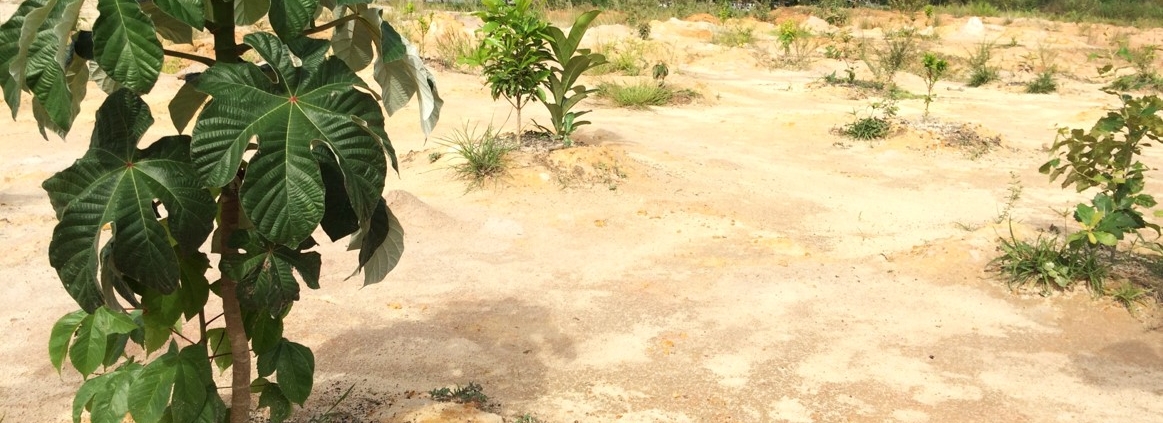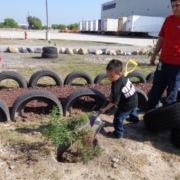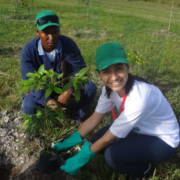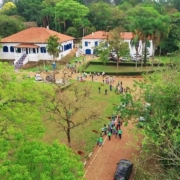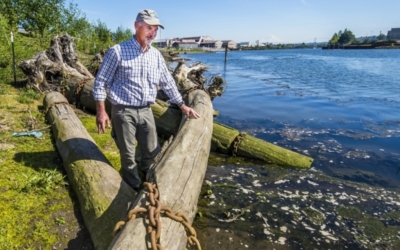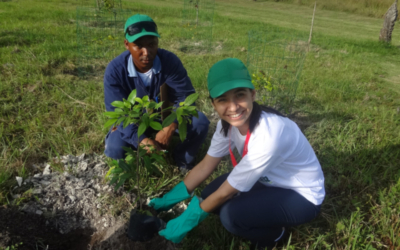Covia | Restoring the Forest in Southeast Mexico
As a leading provider of mineral-based material solutions with approximately 50 million tons of capacity in the US, Canada, and Mexico, Covia—like any mining company—impacts the land they mine. But Covia is committed to restoring disturbed land and conducting mining practices with respect and care for local species and ecosystems during mining operations and post-closure.
One example of this commitment is the certified program at Covia’s Planta Jáltipan in Veracruz, which encompasses nearly 68 acres of reclaimed land in southeast Mexico.
In 2007, Covia partnered with biologists and forestry experts at the Institute of Ecology (INECOL) and adopted a strategic reforestation plan to preserve and restore the habitat. As part of the plan, the team constructed a greenhouse to protect tree seedlings. Inside the greenhouse they grow over fifty different species including wildlife-friendly soursop, savannah oak, and Mexican cedar. The team also creates compost from fallen leaves gathered on the site, and converts cow waste into fertilizer. The greenhouse has produced 8,000 plants to date, and the team has reforested eight acres of the site. This project is part of a larger corporate commitment to conservation and meets the Mexican government’s requirements for reforestation. In 2014, COVIA expanded the area by over 50 acres after converting a former silica sand mind back into wildlife habitat
As part of its reforestation plan, the team at Covia also manages two plant nurseries to cultivate 13 priority native plant species recommended by INECOL, including guava, avocado, and sapodilla.The nurseries produce more than 15,000 plants per year which are planted in the conservation area or donated to local school groups and communities as part of a regional conservation education awareness effort.
Covia also maintains an artificial lagoon, nest boxes and feeders to attract local wildlife to the reforested site, which includes various species of birds and reptiles like iguanas and turtles The team monitors the site’s flora and fauna regularly and conducts formal inventories with support from INECOL.
Education is a vital part of the conservation program at Planta Jáltipan. Employees coordinate with local schools to lead field trips to the plant’s reforested area, providing learning opportunities through hands-on, outdoor and nature-based activities. More than 3,500 students and community members visit the site per year.
Jáltipan’s reforestation plan has been recognized by the state and federal government and suggested as a model for similar open-pit mining restoration projects. Furthermore, the survival of trees and shrubs at the site is so high that it exceeds the results obtained by the National Forestry Commission. Jaltipan Planta was also postulated as a serious candidate for the Institute of Ecology’s National Forest Merit Award in 2018.
Related Content
- White Papers:
- Relevant President’s Blog or Wildlife Blog posts
- Project Guidances:
- Webinars:
- Assessing the Value and Benefits of Trees: An Intro to i-Tree
- Incorporating Project Learning Tree into Your Educational Projects
- Monitoring and Documentation: The Key to Successful Programs
- The Three “E’s” to Success: Employees, Education and Engagement
Quick Facts
| Site Name: | Covia Planta Jáltipan |
|---|---|
| Category: | Member Spotlight |
| Tag: | forest |
| Site Location: | Veracruz, Mexico |
| Partner: | National Institute of Ecology and Climate Change, Mexico (INECC) |
| Certification Since: | 2007 |
| Certification Level: | Silver Certified |
| WHC Index Link: | Learn more about this program |
